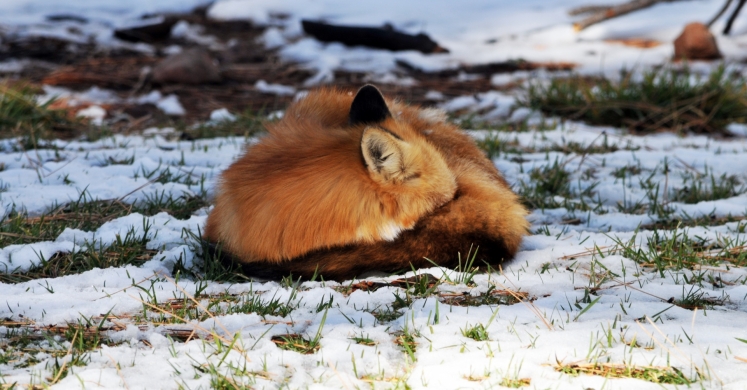Blog

#bioPGH: What Kind of Wintertime Snooze?
 A resource of Biophilia: Pittsburgh, #bioPGH is a weekly blog and social media series that aims to encourage both children and adults to reconnect with nature and enjoy what each of our distinctive seasons has to offer.
A resource of Biophilia: Pittsburgh, #bioPGH is a weekly blog and social media series that aims to encourage both children and adults to reconnect with nature and enjoy what each of our distinctive seasons has to offer.
When it’s cold outside, a warm, snuggly nap sometimes just feels like the best thing in world — and it seems as though many of our wild friends agree. Hibernation, though, is a bit more complicated than simply sleep, which largely revolves around changes in brain activity and consciousness. During winter time, saving energy is usually the top priority for animals, but this can be tricky since staying warm can create a high demand for energy despite low food availability. Thus, any way to save energy, whether it is lowering metabolic rates or completely hibernating, is key. Let’s look at a few of the different ways our local wildlife “nap” their way through colder weather.
Torpor
Torpor is a physiological state defined by a decrease in body temperature, heart rate and metabolism. The net energetic effect is that the animals will need far less food and water for the duration of this state to maintain themselves because their bodies are so inactive. Animals in torpor will typically remain that way less than 24 hours (usually 3 – 12 hours).
An interesting point here is that torpor isn’t necessarily a response to cold weather or low resource availability. A variety of animals go into torpor at night (daily torpor) even during summer months, particularly if those animals have high metabolic demands. Some species of hummingbirds, rodents, bats and marsupial enter daily torpor depending on their needs.
Hibernation
We can think of hibernation as a prolonged, multi-day torpor. Hibernating animals dramatically decrease their metabolic demands, their body temperatures drop and they stay that way for weeks or even months. While daily torpor seems to be controlled by circadian rhythms, hibernation is more often a response to resource availability.
Not all hibernation experiences are equal, though. Some animals will go into a deep hibernation state that seems like a “deep sleep” to observers. Animals like our black bears, though, will get up and move around periodically. Animals who stay in a deep hibernation for winter will usually fatten up as much possible ahead of the colder months and then live off those fat reserves through the winter. We mentioned this strategy recently when we talked about groundhogs here on the blog, but I think the annual tradition of “Fat Bear Week” from Katmai National Park and Reserves highlights the extreme weight gain of Alaska’s grizzly bears before hibernating!

Before and after hibernation – “Holly,” winner of the 2019 “Fat Bear Week” bracket-style fan challenge. National Park Service
Brumation
Essentially hibernation for reptiles and amphibians, brumation differs metabolically. Reptiles and amphibians are “cold-blood” (ectothermic, meaning they rely on their environment to stay warm) while mammals and birds are “warm-blooded” (endothermic, meaning they can generate their own heat). Thus, their energy needs are different to begin with, since these groups of animals do not expend a great deal of energy managing body temperature. Like with torpor, brumating animals have decreased physiological activity, but unlike hibernation, animals who are brumating will move around if temperatures even briefly become more favorable to them.
To Sleep or Not to Sleep?
In the end, animals have a variety of ways that they manage the low resources of winter. Some may “sleep,” while others migrate somewhere warm and some simply become less active. Even as a human — I feel I can relate to just about all of these!
Connecting to the Outdoors Tip: We may feel sleepy and Netflixy this time of year, but the winter is still a good time to shake off the snoozes and get outdoors! Check out what's happening at our county parks!
Continue the Conversation: Share your nature discoveries with our community by posting to Twitter and Instagram with hashtag #bioPGH, and R.S.V.P. to attend our next Biophilia: Pittsburgh meeting.
Images Credits: Holly the bear, National Park Service, public domain; cover, NeedPix.com, public domain; Header, Wikimedia user Michael Hunter, CC-BY-SA-4.0

